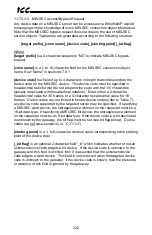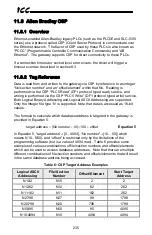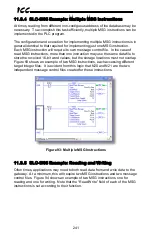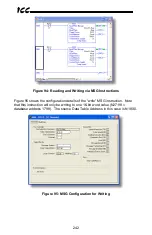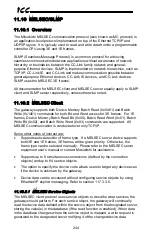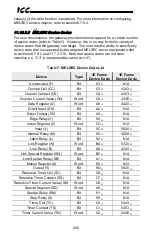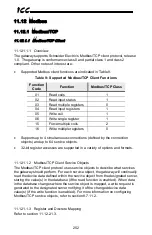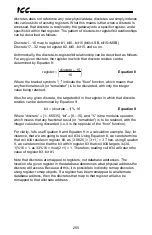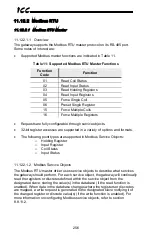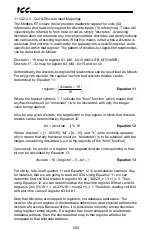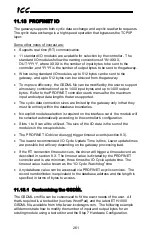
246
ICC
11.10.3
MELSEC Server
The gateway supports Device Memory Batch Read (0x0401), Batch Write
(0x1401), Random Read (0x0403), and Random Write (0x1402) commands for
word access for 3E frames. For 1E frames, both Device Memory Batch Read
Word (0x01) and Batch Write Word (0x03) commands are supported. All
commands only support word units. All MELSEC communication is conducted
over only TCP/IP.
The only supported device type is the File Register (“ZR”). The 3E hex code for
the File Register device type is 0xB0 and the 1E hex code is 0x5A52. If
applicable, the network number is 0, the PC number is 0xFF, the module I/O
number is 0x3FF, and the module station number is 0. For more information
regarding the MELSEC protocol, refer to the Mitsubishi MELSEC Communication
Protocol reference manual.
By default, device points are mapped into the database using the following
scheme:
ZR0 is mapped to address 0,
ZR1 is mapped to address 2,
ZR2 is mapped to address 4,
:
Arithmetically, the device point-to-address relationship can be described via
Equation 6:
(point)
2
address
×
=
Equation 6
Other notes of interest are:
•
Supports up to 8 simultaneous connections.
•
The TCP port is user configurable (refer to 8.7.10.1).
•
The max MELSEC frame size is 1460 bytes. Refer to Table 8 for the device
point limitations per command.
•
The 3E Random Write command will attempt to write to all requested device
points even if an error is encountered. Ensure that all requested device
points are valid before using Random Write.
•
The socket timeout time is determined by the “timeout” setting on the web
server’s “MELSEC” tab or via the “timeout” setting of the protocol selection
group in the configuration utility (refer to section 8.7.10.1.) This means that if
a particular open socket experiences no activity for more than the timeout
time setting, then the gateway assumes that the client or network has
experienced some sort of unexpected problem, and will close that socket.
•
Because the socket timeout determination is performed on a per-socket
basis, note that a certain degree of caution must be exercised when using
the network timeout feature to avoid “nuisance” timeouts from occurring.
Specifically, do not perform inadvisable behavior such as sending a request

